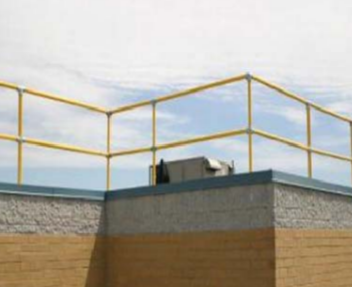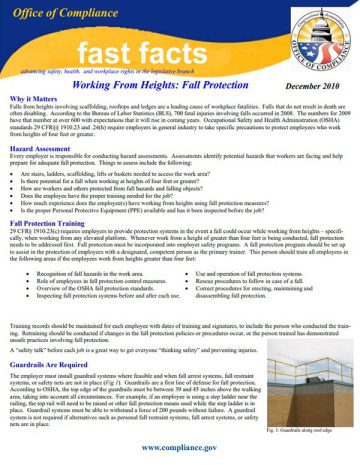Why it Matters
Falls from heights involving scaffolding, rooftops and ledges are a leading cause of workplace fatalities. Falls that do not result in death are often disabling. According to the Bureau of Labor Statistics (BLS), 700 fatal injuries involving falls occurred in 2008. The numbers for 2009 have that number at over 600 with expectations that it will rise in coming years. Occupational Safety and Health Administration (OSHA) standards 29 CFR§§ 1910.23 and .24(h) require employers in general industry to take specific precautions to protect employees who work from heights of four feet or greater.
Hazard Assessment
Every employer is responsible for conducting hazard assessments. Assessments identify potential hazards that workers are facing and help prepare for adequate fall protection. Things to assess include the following:
- Are stairs, ladders, scaffolding, lifts or baskets needed to access the work area?
- Is there potential for a fall when working at heights of four feet or greater?
- How are workers and others protected from fall hazards and falling objects?
- Does the employee have the proper training needed for the job?
- How much experience does the employee(s) have working from heights using fall protection measures?
- Is the proper Personal Protective Equipment (PPE) available and has it been inspected before the job?
Fall Protection Training
29 CFR§ 1910.23(c) requires employers to provide protection systems in the event a fall could occur while working from heights – specifically, when working from any elevated platform. Whenever work from a height of greater than four feet is being conducted, fall protection needs to be addressed first. Fall protection must be incorporated into employer safety programs. A fall protection program should be set up to assist in the protection of employees with a designated, competent person as the primary trainer. This person should train all employees in the following areas if the employees work from heights greater than four feet:

